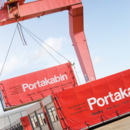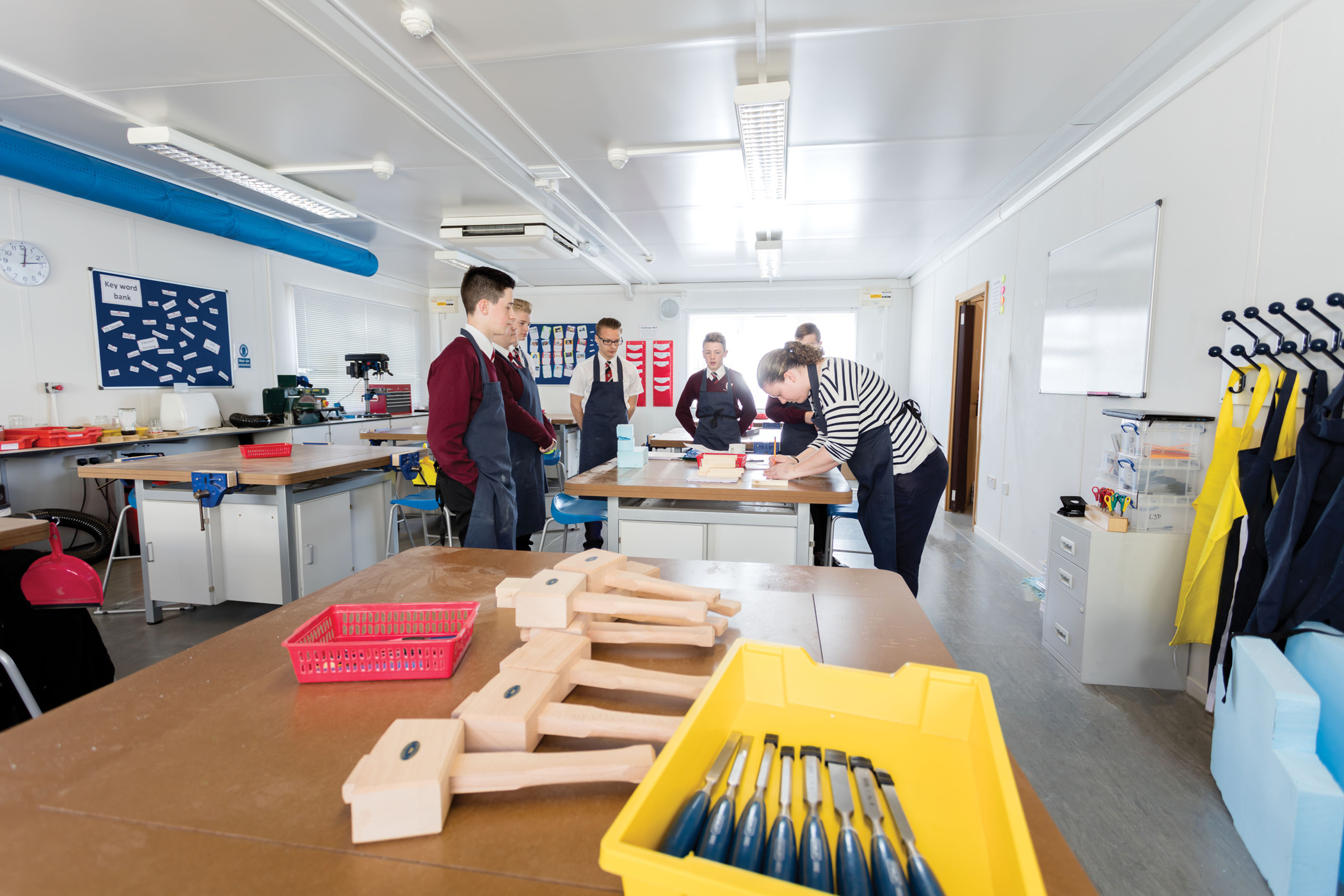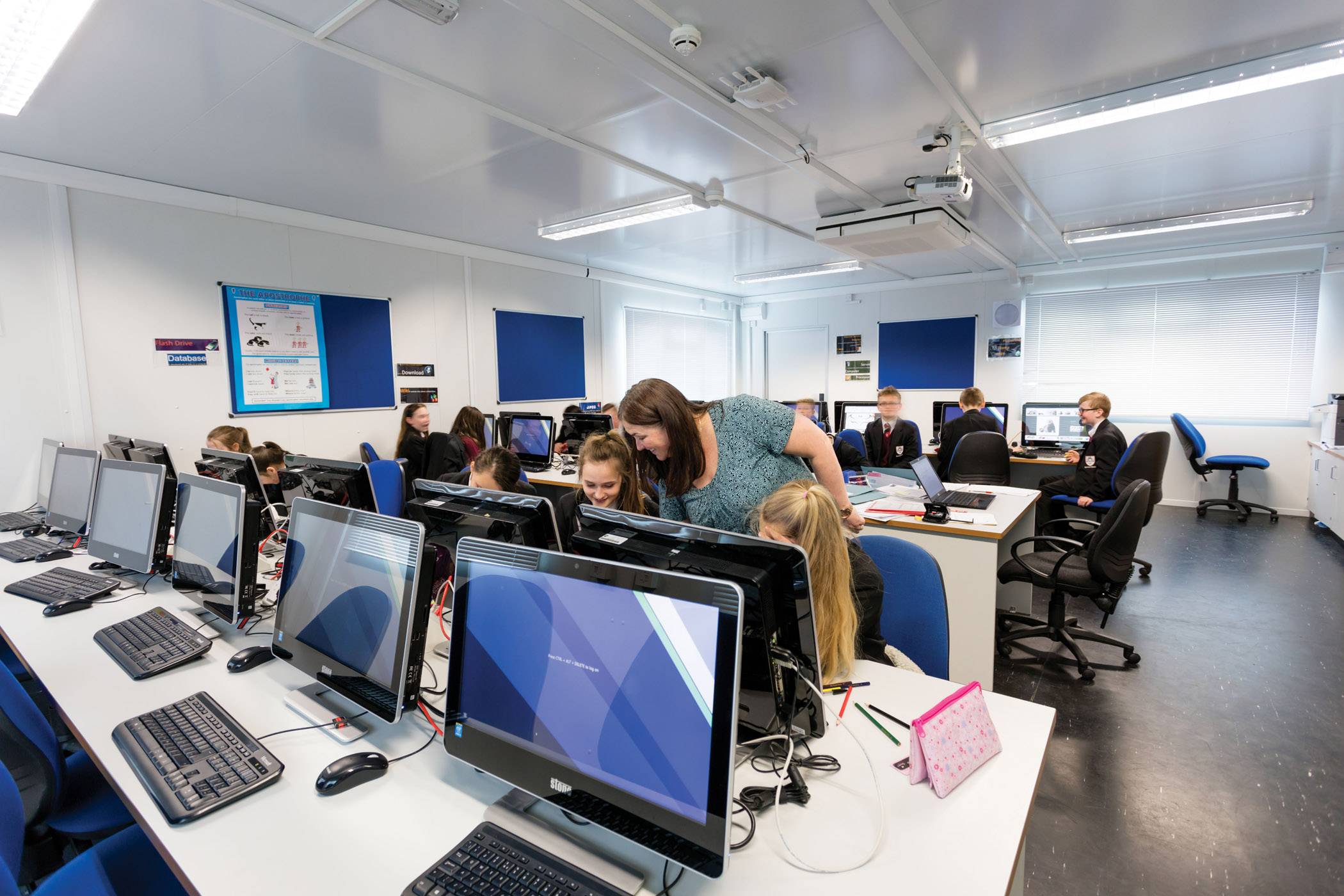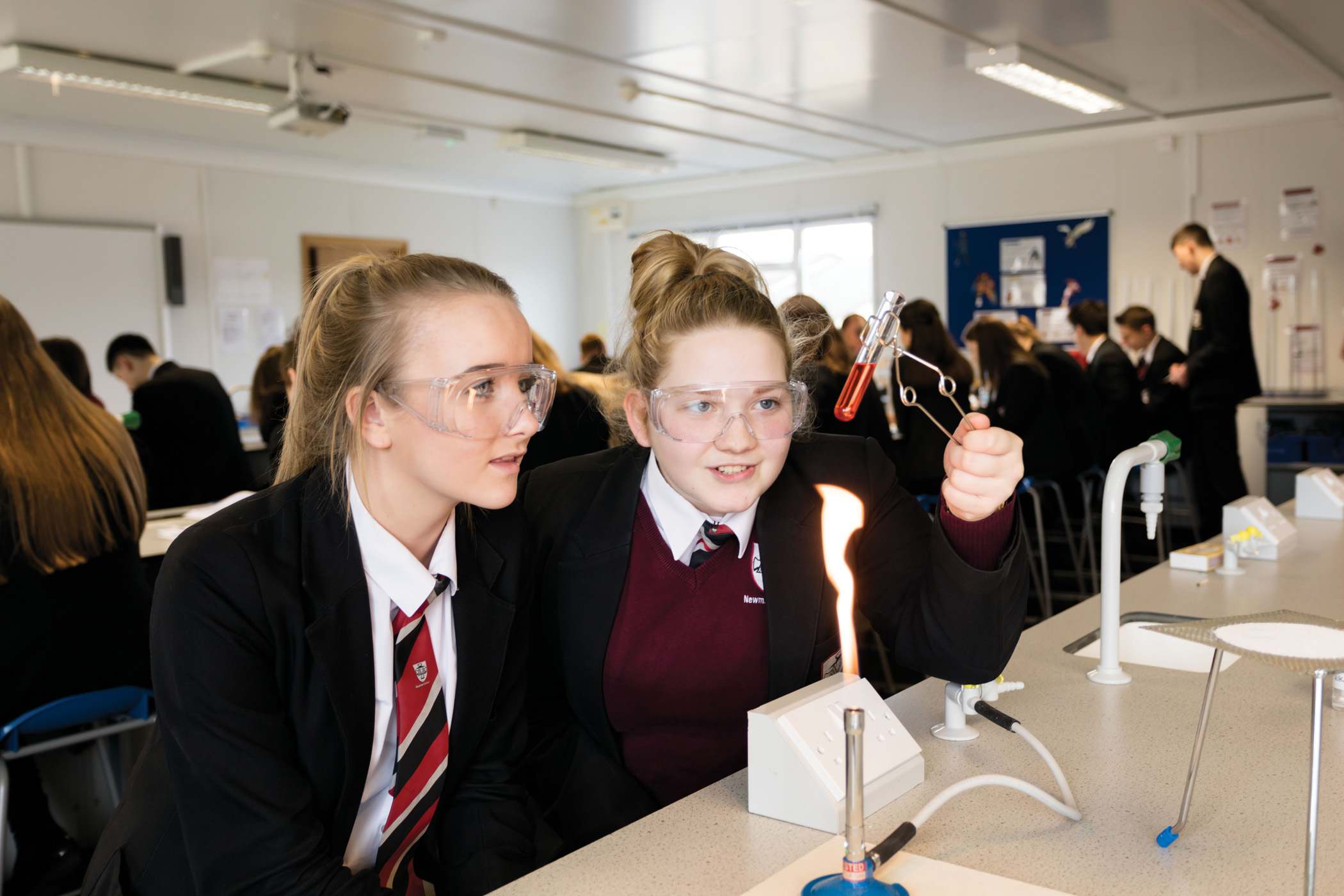Lessons Learned from the Cumbria Floods
In this article, Robert Snook, Director and General Manager at Portakabin, looks at how a secondary school devastated in the Cumbria floods successfully minimised the impact on education provision and shares some of the lessons learned.
Contents |
[edit] Introduction
Unprecedented flooding across Cumbria was caused by storms and when the banks of the River Eden burst, havoc was wreaked in homes, schools and businesses, affecting around 3,000 children in the region. After tremendous effort, Cumbria County Council and the schools involved were able to ensure that all children could return to classes for the start of the spring term in either adapted buildings or interim teaching accommodation.
The worst-hit school was Newman Catholic School, a secondary school and sixth form in Carlisle which was irreparably damaged – and flooded for the second time since 2005. Flood waters rose to 7ft, with most of the ground level rooms and facilities left under heavily contaminated water. There was extensive water damage to the science laboratories, data communications, ICT suites, chapel, main hall, sports halls, children’s work, and precious exam coursework.
The teaching staff had to begin almost from scratch but the first priority was to get Christmas back on the agenda for the children, demonstrating that the school was still serving the local community, even though its building was not. The Christmas carol concert went ahead at another local school and was a resounding success.
[edit] First Phase Emergency Response
The Portakabin local emergency response team had its first meeting with the school within days of the disaster and plans to re-open on the site of a former primary school were put into action with additional interim classrooms being installed very quickly. This could ensure the facilities would be in place for the start of the spring term for its 650 pupils.
Twelve single classroom buildings were supplied complete with furniture, data communications and alarm systems as a first response to get the school up and running again while a longer-term accommodation solution could be designed and constructed. Each building provided open-plan teaching space for around 34 children to supplement the former primary school facility.
[edit] A Bespoke Interim School Solution
Twenty-four general classrooms and highly fitted out specialist rooms including for ICT, design and technology, food technology and science were then delivered to site to help create the interim school. The buildings totalling 2,100sqm were supplied in just 12 weeks, designed and built to permanent standards, and will be in use until a long-term solution is developed.
Portakabin provided Cumbria County Council with a full service for Newman School’s new site following the flood disaster – ground works for the buildings, all fitting out, air conditioning, fire and security alarm systems, access ramps and walkways, emergency lighting, furniture, service connections and data communications. The scheme also included the provision of sports changing rooms, shower and toilet facilities, and a furnished sixth form common room.
The general and specialist classrooms were configured as 12 double classroom blocks which are located on either side of a central ‘street’. Some of the buildings are linked together, and all the rooms have movement sensors to reduce energy consumption. Much of the lost equipment was replaced and fully fitted:
- The design and technology rooms have air conditioning, extraction fans, a store room and laser cutting room, interactive white boards, pillar drills, and 3D printers.
- The food technology classrooms have sinks and drainers, microwaves, hobs and ovens, hard-wearing work tops, work benches laid out in islands, washing machine, tumble dryer, large freezer, dishwasher, and under work-top fridges.
- The science laboratories are fitted with non-slip vinyl flooring, fume cupboards, air extraction and ventilation, gas taps, sinks, data connections, and two laboratories have adjacent preparation rooms.
- The sixth form common room was supplied with a fitted kitchen area, dining furniture and soft seating.
[edit] The Project Challenges
This was a challenging project on a difficult site and required in a very fast timescale to minimise disruption to the children’s education:
- The new accommodation had to be sited on a water-logged playing field which required gas, electric and water services bringing in.
- The site was located in a constrained residential area so an access road had to be constructed for delivery of the buildings.
- The construction team had to work through very poor weather conditions and still deliver the project on time and on budget.
[edit] The School’s Perspective
John McAuley, Head Teacher at Newman Catholic School said, “The Portakabin team was incredibly fast to respond to the situation and planning meetings were held within days of the disaster. This was really important to help us manage the situation. Our priority was to ensure that our students could be taught in accommodation that was at least equivalent to what they had before. The reality is that the interim facilities we now have are in many ways superior to our original classrooms.”
“The building design team was able to accommodate our specific requirements, such as larger science laboratories, and worked really hard to deliver exactly what we needed in a tremendously short timescale.”
“The classrooms are bright, warm, airy and welcoming. Despite the terrible floods, our school has considerably improved facilities. We would absolutely recommend this approach to other schools needing emergency accommodation or classrooms for shorter-term use. We have had a fantastic experience with such a responsive team of building professionals who have been there for us every step of the way.”
[edit] The Council’s Perspective
According to Owen David, Project Manager at Cumbria County Council, “Speed of response was exactly what we needed on this project. The Portakabin team was extremely quick to arrive on site to assess and respond to the situation. And by using a building partner who could handle everything for us, we could focus our efforts and resources in other areas that needed addressing because of the seriousness of the flooding across the county. This is just the sort of help and collaboration that schools and local authorities need in an emergency situation. We would certainly recommend the approach, which worked really well for us and the buildings that are now in use are excellent.”
[edit] Lessons Learned
Acting quickly and collaboratively is imperative in an emergency situation. On this project, the school, Council and key suppliers such as Portakabin worked well together and had developed an urgent first response solution within a matter of days of the disaster to re-open the school.
Providing a sense of normality for the students as quickly as possible was the overriding priority. This proved to be hugely beneficial. Students are surprisingly resilient but equally, this experience has shown that it is vital for timetables to remain the same throughout to maintain a strong sense of continuity. The rooms may have changed but neither the teachers nor the subjects have, which this project has shown really helped.
Forming a partnership with a good emergency response building supplier was critical – and involving the modular company immediately – and not 7-10 days after the crisis – is very important. This allows resources and available buildings to be allocated to the priority school sites.
Check at the outset that the modular supplier has the capacity and building stocks required for the project, when the accommodation is needed – as few suppliers in the UK can offer lead times of just a few days. Does the modular partner have adequate project management resources, design expertise and site supervision in place? For disaster recovery, it is vital that buildings are delivered on time, on budget and to the required standard.
Newman School needed a partner with the fleet resources immediately available to provide the volume of buildings required. The school also benefited from the Portakabin team’s wealth of knowledge in disaster recovery and its years of experience working closely with major school insurers. This all helped to ensure that disruption to teaching was minimised from the outset.
Speed of response is always essential as is delivering teaching accommodation of the highest standards and in line with Department for Education guidelines. There should never be any compromise on children’s education just because they are working in interim classrooms.
[edit] The Importance of Contingency Planning
A key lesson learned from the Cumbria floods is that more schools need to have up-to-date disaster recovery plans prepared in advance – which a company such as Portakabin can assist with. A detailed school inventory and a full assessment of the school’s building requirements can potentially cut an emergency response programme by up to two weeks, further reducing any interruption to teaching.
The planning data can be stored remotely and a fully costed building proposal produced without the supplier even needing to visit the school to assess requirements.
The plan should include a detailed review of the site, the school facilities to replicate, the potential areas for siting interim accommodation, ground works implications, access issues, and space planning. This preparation is invaluable in helping to ensure a school or college has the buildings needed to continue to operate in the event of a crisis situation.
[edit] Emergency Building Options
In any emergency situation, such as fire, power failure, flooding or the discovery of asbestos, schools have a number of options:
- Single module buildings can be rapidly delivered, often within 24 hours, from the modular supplier’s national hire fleet, provided they carry sufficient buildings in stock. This allows core operations to be working again very quickly.
- A bespoke, longer-term accommodation solution can then be developed to the school’s exact specifications if the original building has been so severely damaged that it will be out of use for a number of months.
Following a disaster, specialist building suppliers such as Portakabin can help with generators for emergency power, furniture, connections to waste tanks if it is not possible to connect the buildings to mains services; security and alarm systems which can be an essential requirement if the interim accommodation has to be located outside the school site; access ramps; patching data communications into the main IT network, and ground works.
With careful planning and collaborative working, schools can be fully operational as fast as possible to minimise the impact of any major incident on education provision.
[edit] Find out more
[edit] Related articles on Designing Buildings Wiki
- How contractors can reduce risk with the use of off-site construction.
- Modular buildings for education.
- North Middlesex University Hospital Maternity Unit.
- Planning Permissions and Interim Buildings – Addressing the Misconceptions.
- Predicting the energy use of the Cambridge base for the East Anglian Air Ambulance
- Site office.
- The myths of modular construction.
Featured articles and news
Latest Build UK Building Safety Regime explainer published
Key elements in one short, now updated document.
UKGBC launch the UK Climate Resilience Roadmap
First guidance of its kind on direct climate impacts for the built environment and how it can adapt.
CLC Health, Safety and Wellbeing Strategy 2025
Launched by the Minister for Industry to look at fatalities on site, improving mental health and other issues.
One of the most impressive Victorian architects. Book review.
Common Assessment Standard now with building safety
New CAS update now includes mandatory building safety questions.
RTPI leader to become new CIOB Chief Executive Officer
Dr Victoria Hills MRTPI, FICE to take over after Caroline Gumble’s departure.
Social and affordable housing, a long term plan for delivery
The “Delivering a Decade of Renewal for Social and Affordable Housing” strategy sets out future path.
A change to adoptive architecture
Effects of global weather warming on architectural detailing, material choice and human interaction.
The proposed publicly owned and backed subsidiary of Homes England, to facilitate new homes.
How big is the problem and what can we do to mitigate the effects?
Overheating guidance and tools for building designers
A number of cool guides to help with the heat.
The UK's Modern Industrial Strategy: A 10 year plan
Previous consultation criticism, current key elements and general support with some persisting reservations.
Building Safety Regulator reforms
New roles, new staff and a new fast track service pave the way for a single construction regulator.
Architectural Technologist CPDs and Communications
CIAT CPD… and how you can do it!
Cooling centres and cool spaces
Managing extreme heat in cities by directing the public to places for heat stress relief and water sources.
Winter gardens: A brief history and warm variations
Extending the season with glass in different forms and terms.
Restoring Great Yarmouth's Winter Gardens
Transforming one of the least sustainable constructions imaginable.



























